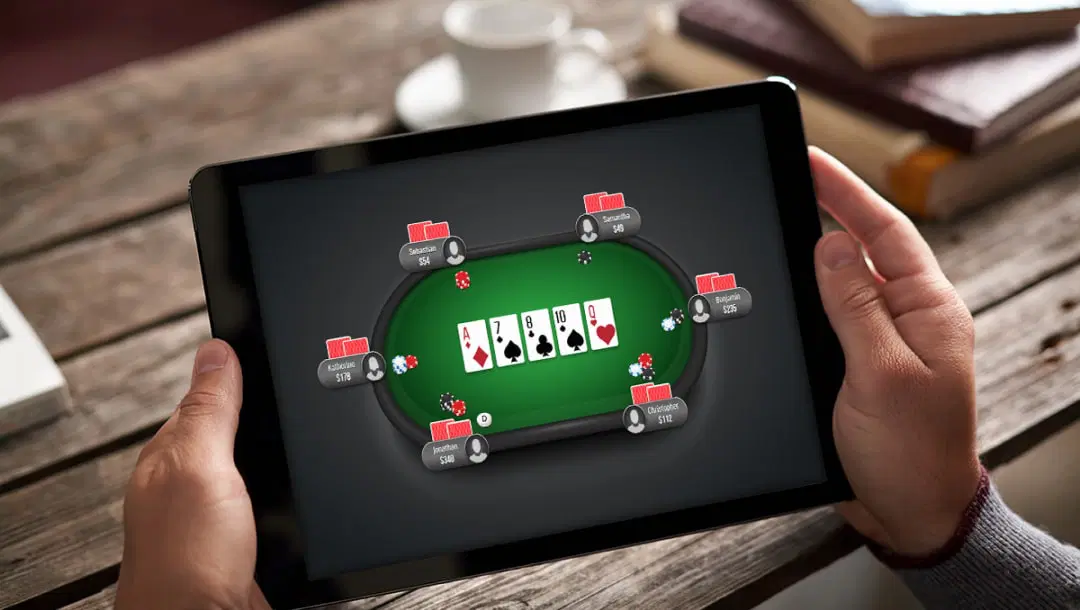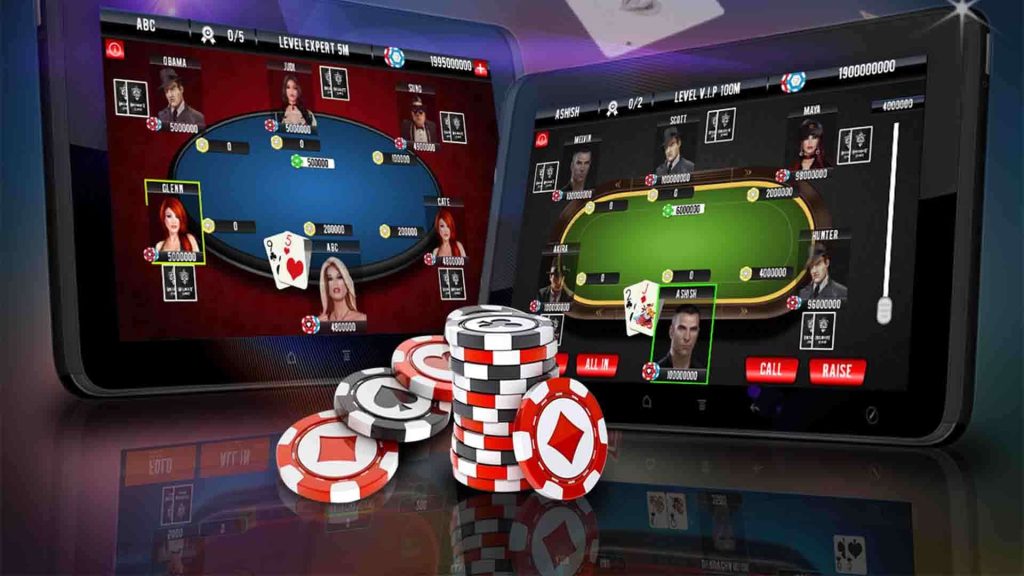Poker has long been more than just a card game. It is a test of patience, skill, psychology, and chance. Over time, two distinct formats have emerged that shape how players experience the game: online poker and live poker. While the rules remain the same, the environments in which these games are played could not be more different. Online poker has introduced speed, accessibility, and technological advantages, while live poker has maintained its traditional appeal with human interaction and tangible presence. Comparing the two illuminates how they differ in pace, psychology, strategy, and overall atmosphere.
Accessibility and Convenience
One of the most immediate contrasts between online and live poker lies in accessibility. Online poker is available at the click of a button. Players can log in at any time, from any location, and instantly join a game. This accessibility has opened poker to a much wider audience, including those who may not live near a casino or poker room. For many, it has transformed poker from a special event into a daily activity.

Live poker, by contrast, requires more commitment. Players must travel to a casino, cardroom, or local tournament. The process often involves arranging time, preparing for a longer session, and sometimes waiting for a seat at the table. While less convenient, this effort adds weight to the experience. Many players find that the journey and preparation heighten the anticipation, making the game itself feel more significant. Convenience, then, is both the greatest strength of online poker and the defining ritual of live play.
Pace of the Game
Speed is another area where online and live poker diverge sharply. Online poker is fast-paced, with digital shuffling, automatic dealing, and time-limited decisions keeping the game moving rapidly. Players often see many more hands per hour online than they would at a live table. For beginners, this accelerated pace can mean a quicker learning curve, as they encounter more situations and accumulate experience in less time. For seasoned players, the speed allows them to play multiple tables simultaneously, a feature that live poker can never replicate.
Live poker, on the other hand, is slower. Cards are shuffled manually, bets are counted out by hand, and players take their time before making decisions. While this pace can feel sluggish to someone accustomed to online play, it also fosters an atmosphere of patience and tension. Every hand feels deliberate, every move studied. The slower rhythm allows for more conversation, observation, and reflection, creating an entirely different type of engagement.
Human Interaction and Social Dynamics
Perhaps the most striking difference lies in the social aspect of poker. Live poker thrives on face-to-face interaction. The physical table becomes a stage where players read body language, observe mannerisms, and attempt to uncover hidden tells. A simple hesitation, a glance at the chips, or a nervous shuffle of the cards can provide valuable information. Conversation at the table also shapes the mood, with humor, banter, and strategic silence adding layers of psychology to the game.
Online poker strips away these physical elements. Players cannot rely on body language or spoken exchanges. Instead, they must adapt to a different form of observation—betting patterns, timing, and statistical tendencies become the new tells. While this reduces the human element, it shifts the focus to cold, logical analysis. The absence of direct social interaction makes online poker more solitary but also more mathematical in nature. For players who thrive on psychology and human intuition, live poker holds the edge. For those who prefer data and patterns, online poker may be more rewarding.
Strategy and Adaptation
The environment of each format also shapes strategic approaches. In live poker, the slower pace and emphasis on social cues mean that players must cultivate patience and discipline. Bluffing carries greater weight because it unfolds in a personal, high-stakes setting where opponents can be directly observed. The physical exchange of chips and the presence of an audience intensify both risk and reward.
Online poker strategy often leans more toward technical precision. Players have access to tools that track hand histories, calculate probabilities, and identify long-term patterns. Decisions are less about reading a person’s face and more about interpreting raw data. Multi-tabling encourages tighter, more standardized play, as players must make rapid choices without the luxury of extended reflection. Adaptation in this environment requires sharp analytical skills, while live poker demands psychological awareness and composure under pressure.
Stakes and Atmosphere
Atmosphere plays a huge role in how players experience the game. In live poker, the tactile feel of chips, the sound of shuffling cards, and the physical presence of competitors create a sense of immersion. The stakes feel higher when money is physically on the table and emotions can be read in real time. Wins and losses resonate more deeply because they unfold in a shared space, with tension building collectively around the table.
Online poker, in contrast, feels more controlled and detached. Money is digital, chips are virtual, and opponents are faceless. While this may reduce the emotional highs and lows, it also creates an environment where players can make more rational decisions. For some, the lack of atmosphere is a drawback; for others, it removes distractions and keeps the focus on pure strategy. Both experiences shape how seriously players perceive the stakes, even if the amounts of money involved are the same.
Learning Curve and Skill Development
Each format also influences how players develop their skills. Online poker accelerates learning by exposing players to more hands in less time. Beginners can experiment, make mistakes, and quickly encounter a wide range of scenarios. This repetition sharpens technical knowledge and probability-based decision-making. Online resources and statistical tools further enhance the ability to review and refine strategy.
Live poker offers a slower, but perhaps deeper, form of education. Players learn to manage patience, read people, and control their own behavior under pressure. They become attuned to the psychological dimensions of the game, which are harder to replicate online. Many seasoned players argue that mastering live poker equips individuals with a more well-rounded skill set, as it requires balancing technical understanding with emotional intelligence.
The Psychological Experience
The psychology of playing in front of others versus behind a screen is a defining contrast. Live poker demands a strong poker face and emotional control. Players must conceal excitement, disappointment, or frustration, knowing that any slip might give opponents an edge. The presence of spectators and opponents amplifies the pressure, making every decision feel more consequential.
Online poker reduces these psychological pressures. Without physical observation, players can hide behind anonymity. This freedom encourages bold play but also fosters impulsive decisions. Some find it easier to take risks online, while others struggle with the isolation and lack of feedback. The psychological challenge of live poker may be more intense, but online play has its own mental hurdles, particularly the discipline required to avoid distraction or emotional overreaction.
Blending the Two Worlds
Interestingly, many players today do not see online and live poker as competing but rather as complementary. Online play offers the convenience, speed, and technical practice needed to refine skills, while live poker provides the richness of human interaction and the intensity of traditional competition. A player who learns strategy online can test their discipline and psychological resilience in live settings. Likewise, those who cut their teeth in live poker often turn to online platforms to practice volume and explore new variations.

As technology continues to evolve, hybrid formats are beginning to emerge. Live-streamed poker games, augmented reality environments, and digital poker rooms with social features attempt to blend the best of both worlds. The line between online and live experiences may blur further in the future, but the contrast between them remains important in understanding how the game is experienced today.
Conclusion
Online poker and live poker share the same rules but deliver vastly different experiences. Online poker emphasizes speed, accessibility, and analytical precision, while live poker thrives on social dynamics, atmosphere, and psychological depth. Both forms demand skill, but each cultivates different aspects of the game—one technical, the other human. Ultimately, the choice between online and live poker depends on what a player values most: convenience and volume, or tradition and interaction. Together, they ensure that poker continues to evolve while preserving the balance between modern technology and timeless human competition.